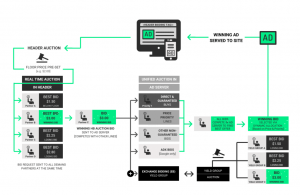A friend reports her small local grocery with one entrance and three aisles has implemented one-way aisles in response to COVID-19, presumably to improve traffic flow. Now I haven’t seen schematics, but a basic understanding of odd numbers tells me that unless one aisle is twice as wide as the others, this attempt to smooth things out is destined to end in a clog of frustrated shoppers.
But let’s take a break from COVID-19 and harken back to a simpler time when many of us jumped on commercial aircraft with impunity – not out of nostalgia, but to help us think more rationally about the utility of arrows pasted to floors. Did you know that significant calories have been spent by researchers on what’s called “The Aircraft Boarding Problem”?
If you don’t believe me, do a quick Google Scholar search on the term. You’ll find a long list, including:
- This paper full of equations and tables that defines two primary impediments to boarding: seat interference (“I can’t jump over the person sitting in my row”) and aisle interference ( “I can’t jump over the person standing in my way”)
- This study in which the authors recommend that “airline managers should consider issues related to evenly distributing boarding activity throughout the aircraft” – whatever that means
- This recent investigation into applying machine learning to the problem (thankfully without employing the Boston Dynamics dog to move passengers along)
It’s true: for decades, intelligent people have been working on the issue with little success. If you are – uh, were – a frequent traveler like me, you know this. Over the years you’ve experienced various back-to-front, outside-in, and VIP-to-plebian boarding sequences, all inflicted upon you to speed things along. And you’ve likely arrived at the same conclusion most researchers have: no approach is better, and they’re all slow.
Except one. As it turns out, one airline has demonstrated faster boarding year after year. While academics and consultants were guzzling coffee hard at work on the question of the fastest way to direct people to board, Southwest Airlines laughed and implemented their famous (or infamous) open seating routine. Southwest tells a line of passengers to “hurry up and get on the plane or we’ll be late,” then lets them figure the rest out for themselves. It feels socially awkward. It seems logistically clumsy. But every day, for a couple of decades, in airports across the US, groups of random strangers have done a better job sorting out boarding in real time than academics and consultants could muster with simulators and numerical methods. How? Because they were equipped and then allowed to create group intelligence.
As an engineer who likes processes, that sort of bugs me. But as a guy who focuses on getting executive and senior management teams to run functional organizations, I’m not surprised. Group intelligence is real, and an “organization” is just a group of people (ahem) organized by leadership and management to create results too complex to be accomplished alone. Those desired outcomes may be a whole lot more involved than getting on a plane, but there are only three ways to go about the organizing, and really only one which maximizes group intelligence.
First, you can choose to tell everyone exactly what to do, by when, and how, constantly. This “top-down” or autocratic approach has some advantages in short term speed for small groups, but it falls apart once the people doing the work know more about it than the people doing the leading and managing. Some of the most famous examples of this approach have been military, yet even the military for years has been leaning into developing less autocratic approaches in recognition of the increasing complexity (PDF) around them. If you don’t permit people to act intelligently, they never will.
Second, you can choose to tell nobody, nothing, ever. Perhaps as a sort of pendulum-the-other-way response, or perhaps out of sheer distraction, humanity has experimented liberally with what we might call a laissez-faire form of oversight. Trusting people to do what is right makes sense, but taken to the extreme, leadership disengagement is management malpractice. Whether the would-be leader is absent on the golf course, or eagerly present yet self-isolating to “stay out of everyone’s way,” failure to provide enough guidance is no less problematic than forcing too much, as it leaves people lost as to what they should be doing. If you don’t equip people to act intelligently, they never will.
The third alternative, unsurprisingly, is a middle ground: Superiors help people form clear, measurable, tangible definitions of what they are supposed to accomplish. Managers and leaders provide subordinates access to resources without cumbersome acquisition processes. And workers at all levels learn to keep track of their own progress, monitoring whether they’re on or off track before their boss asks. Colloquially speaking, workers in this scenario know what they’re doing, have what they need to do it, and understand viscerally whether it’s getting done or not, all the time.
This simple formula is the magic recipe to simultaneously permit and equip people to act intelligently because it gives them both context and opportunity to do so. As a result, people become more productive, more engaged, and more able to make rational decisions and tradeoffs in their work, as their individual intelligence parlays into group intelligence. Over time, the whole organization gets smarter too, because when the people on the ground are feeding good information up, the people higher up can feed clear goals and expectations back down based upon reality rather than fantasy.
Look at Southwest’s boarding plan, where the implementation is simple and elegant: your goal as a passenger is to get on and get seated as quickly as you can – clear enough. You have access to any seat that’s open (rather than being stuck with an assignment), so you can self-select away from the various forms of boarding interference so problematic in studies. And, you have real, visceral feedback on your rate of progress, in the form of nonverbal communication from the crowd behind you who can’t sit until you do (and whose rapid seating you depend upon for your own timely departure). Unsettling, perhaps. Awkward, maybe. But this produces enough group intelligence to consistently beat out every other boarding scenario yet conceived.
Which brings us all the way back to grocery store signage in the time of COVID. If the notes about where to stand and how to walk are helping with goals and feedback along the way (“here’s a quick visual as to how far apart 6 feet is”), they’re probably supporting intelligent behavior. But if they’re trying to override your good judgement (“to get that can of beans four feet behind you, you’ll need to take another lap”), then they’re distracting at best and detrimental at worst. Ignore the intelligence-drainers if you’re able; get rid of them if you’re allowed.
Awkwardness, painful though it may be, is critical for group intelligence. Working with people, boarding a plane, surviving COVID – as it turns out, when done well, all should be socially clumsy and logistically difficult. Any well-meaning attempt by an overseeing committee to replace that discomfort with marching orders will unavoidably strip good judgment away. And whether it’s your employer, your airline, or your trip to the market in the time of the pandemic, I think we can all agree that’s one thing we can’t afford to lose.
Business & Finance Articles on Business 2 Community
(60)
Report Post





